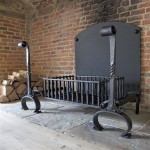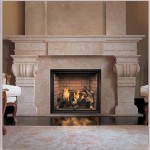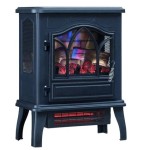The Enduring Appeal of Stone and Wood Fireplace Walls
The combination of stone and wood in fireplace design represents a marriage of rustic charm and enduring elegance. A stone and wood fireplace wall serves as more than just a heat source; it acts as a focal point, defining the aesthetic and character of a living space. The contrasting textures and natural materials create a visual richness that can complement a wide range of interior design styles, from traditional to contemporary.
The selection of stone and wood species plays a crucial role in achieving the desired aesthetic. The size and layout of the room, the existing architectural features, and the overall design theme should all be considered when planning a stone and wood fireplace wall. This detailed planning stage ensures that the finished product harmonizes with its surroundings and provides years of enjoyment.
The construction of a stone and wood fireplace wall requires careful attention to detail and adherence to safety regulations. Proper installation is essential to ensure both the structural integrity of the wall and the safe operation of the fireplace. Engaging qualified professionals with experience in masonry, carpentry, and fireplace installation is highly recommended.
The Aesthetic Versatility of Stone and Wood Combinations
One of the primary advantages of using stone and wood in fireplace design is the inherent aesthetic versatility. Stone offers a vast array of textures, colors, and shapes, ranging from the rugged appearance of fieldstone to the smooth, refined look of stacked stone panels. Wood, similarly, provides numerous options in terms of species, finishes, and profiles.
For a rustic or farmhouse aesthetic, rough-hewn stone, such as river rock or fieldstone, paired with reclaimed wood beams can create a warm and inviting atmosphere. The imperfections and natural variations in these materials add to the character and charm of the space. The use of darker stains on the wood can further enhance the rustic feel.
In contrast, a more contemporary design might feature sleek, linear stone panels, such as slate or travertine, combined with light-colored wood or painted millwork. Clean lines and minimalist details contribute to a sophisticated and modern look. The use of lighter colored woods and stones can brighten the space and create a sense of openness.
Transitional designs often blend elements of both traditional and contemporary styles. A stone fireplace surround with a classic profile might be paired with a modern wood mantel or shelving. The key is to strike a balance between the different elements to create a cohesive and visually appealing design.
The size and scale of the stone and wood elements should also be carefully considered in relation to the overall size of the room. In a large space, a substantial stone fireplace wall with a prominent wood mantel can make a bold statement. In a smaller space, a more modest design with smaller stones and thinner wood elements may be more appropriate.
The fireplace insert or firebox itself also plays a role in the overall aesthetic. Modern gas fireplaces often feature clean lines and minimalist designs, while traditional wood-burning fireplaces may have more ornate details. The style of the fireplace should complement the design of the stone and wood surround.
Material Selection: Stone Types and Wood Species
The choice of stone and wood species is crucial to the overall aesthetic and performance of a stone and wood fireplace wall. Each material offers unique characteristics in terms of appearance, durability, and maintenance requirements.
Common stone types used in fireplace construction include:
- Fieldstone: Naturally occurring stones collected from fields or riverbeds, offering a rustic and irregular appearance.
- River Rock: Smooth, rounded stones formed by water erosion, providing a softer and more organic look.
- Stacked Stone Panels: Pre-fabricated panels of thin stone veneers, offering a clean and contemporary aesthetic.
- Slate: A fine-grained metamorphic rock with a distinctive layered appearance, often used in modern designs.
- Travertine: A type of limestone with a porous texture, available in a range of colors and finishes.
- Limestone: A sedimentary rock known for its durability and versatility, often used in traditional designs.
- Granite: An igneous rock with a speckled appearance, highly durable and resistant to heat.
Factors to consider when selecting stone include its color, texture, size, and shape. The stone should also be compatible with the chosen mortar and sealing products. The weight of the stone is an important consideration for structural support requirements.
Common wood species used in fireplace construction include:
- Oak: A hardwood known for its strength, durability, and distinctive grain pattern.
- Maple: A hardwood with a smooth texture and a light, creamy color.
- Cherry: A hardwood with a rich, reddish-brown color and a fine grain.
- Walnut: A hardwood with a dark, chocolate-brown color and a distinctive grain pattern.
- Pine: A softwood with a knotty appearance and a warm, golden color.
- Reclaimed Wood: Salvaged wood from old buildings or structures, offering a unique and rustic appearance.
Factors to consider when selecting wood include its color, grain pattern, hardness, and moisture content. The wood should be properly seasoned and treated to prevent warping or cracking. The finish applied to the wood will also affect its appearance and durability.
The combination of stone and wood should be carefully considered to create a harmonious and visually appealing contrast. For example, a dark stone might be paired with a light-colored wood, or a rough-textured stone might be paired with a smooth-finished wood.
Construction Considerations and Safety Standards
The construction of a stone and wood fireplace wall is a complex process that requires careful planning and execution. Adherence to building codes and safety standards is essential to ensure the safe and reliable operation of the fireplace.
The foundation of the fireplace wall must be strong and stable enough to support the weight of the stone. This may involve reinforcing the existing flooring or constructing a new foundation. A qualified structural engineer should be consulted to determine the appropriate foundation design.
The fireplace itself must be properly installed according to the manufacturer's instructions and relevant building codes. This includes ensuring proper clearances to combustible materials and providing adequate ventilation. A qualified fireplace installer should be hired to perform the installation.
The stone veneer must be properly adhered to the wall using a suitable mortar. The mortar should be mixed and applied according to the manufacturer's instructions. The stone should be carefully laid out to achieve the desired pattern and appearance.
The wood elements, such as the mantel or shelving, must be securely attached to the wall. The wood should be properly sealed and finished to protect it from moisture and heat. The location of the wood elements should be carefully considered to ensure that they are not exposed to excessive heat from the fireplace.
A fire-resistant barrier, such as cement board or metal studs, should be installed behind the stone and wood elements to protect the surrounding walls from heat. The barrier should extend beyond the fireplace opening to prevent the spread of fire.
Regular maintenance is essential to ensure the long-term performance and safety of the stone and wood fireplace wall. This includes cleaning the stone and wood surfaces, inspecting the mortar joints, and checking the fireplace for any signs of damage. A qualified fireplace technician should be hired to perform regular inspections and maintenance.
Building codes and safety standards vary depending on the location. It is important to consult with local building officials and qualified professionals to ensure that the stone and wood fireplace wall is constructed in compliance with all applicable regulations.
The integration of a stone and wood fireplace wall into a home requires careful consideration of both aesthetic and functional aspects. By understanding the diverse options available in terms of materials, design styles, and construction techniques, a homeowner can create a stunning and safe focal point that enhances the beauty and comfort of their living space.

Natural Stacked Stone Veneer Fireplace Ideas

101 Reclaimed Wood Fireplace Surround Ideas Decoratoo Home Accent Wall Barn

Fabulous Fireplace Walls Debbie Travis Official Site

Some Stone Fireplace Surround Ideas You Ll Love Southwest Supply
:max_bytes(150000):strip_icc()/CASSPhoto_JND_Annisipour_032-a3070e61bb7e441698decd8a9af2950c.jpg?strip=all)
36 Best Stone Fireplace Ideas For A Cozy Home

Natural Stacked Stone Veneer Fireplace Ideas

25 Stone Fireplace Ideas For A Cozy Nature Inspired Home Surround Country

50 Sensational Stone Fireplaces To Warm Your Senses

5 Stacked Stone Surrounds Travertine Quartzite Or Marble

Modern Rustic Living Room Design With Veneer Stone Fireplace Tv Wall Decor Buechel
Related Posts








